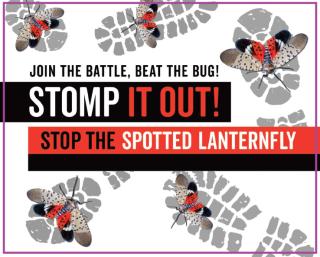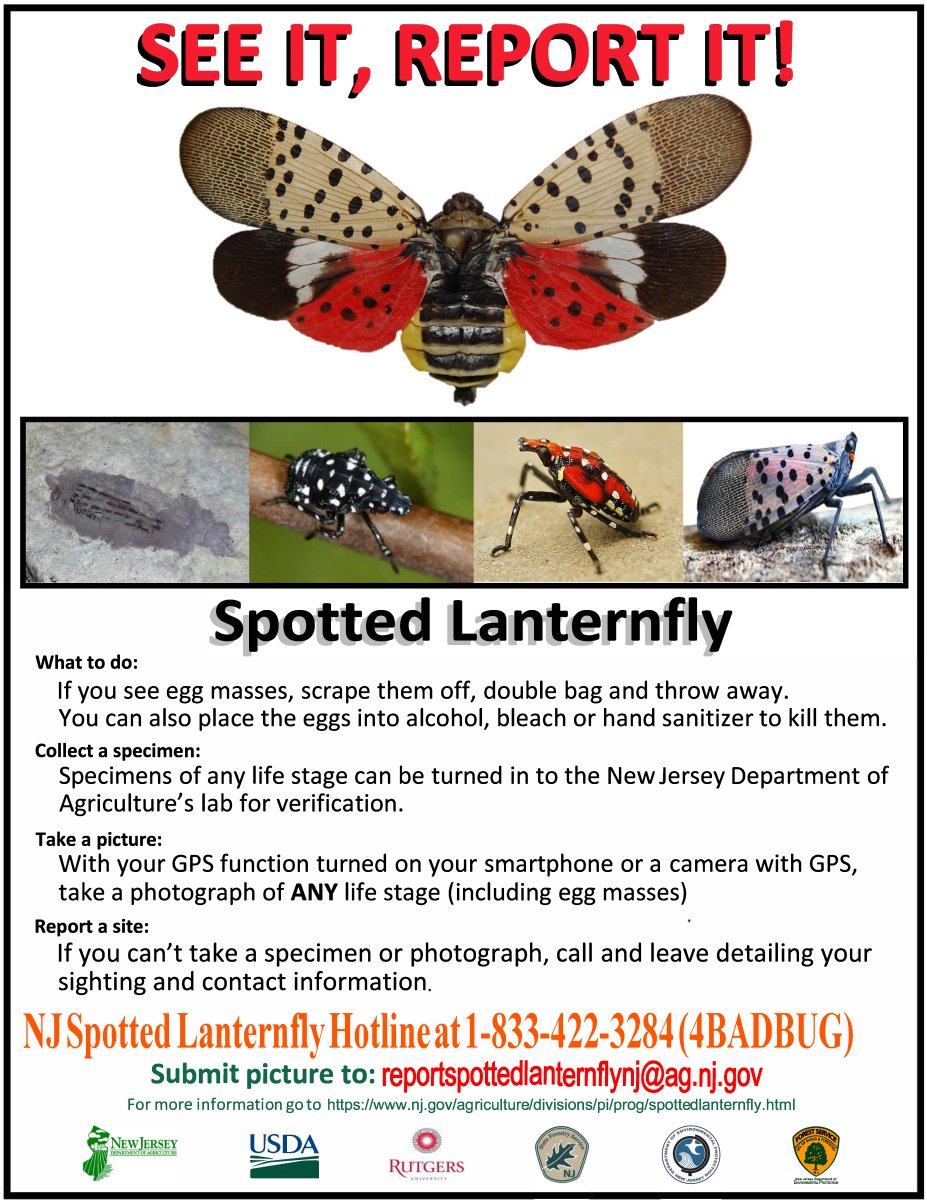Spotted Lanternfly Alert - See It, Report It!
Posted on: July 27, 2022 - 1:27pm

Spotted Lanternfly (SLF), Lycorma delicatula, is an invasive planthopper native to China, India, and Vietnam; it is also established in South Korea, Japan and the U.S. It was first discovered in the U.S. in Pennsylvania in Berks County in 2014 and has spread to other counties in PA, as well as the states of New Jersey, Delaware, Maryland, Virginia, West Virginia, New York, Connecticut and Ohio.
This insect has the potential to greatly impact agricultural crops and hardwood trees. SLF feeds on the plant sap of many different plants including grapevines, maples, black walnut, and other important plants in NJ. While it does not harm humans or animals, it can reduce the quality of life for people living in heavily infested areas.
Why You Should Care
SLF is a serious invasive pest with a healthy appetite for our plants and it can be a significant nuisance, affecting the quality of life and enjoyment of the outdoors. The spotted lanternfly uses its piercing-sucking mouthpart to feed on sap from over 70 different plant species. It has a strong preference for economically important plants and the feeding damage significantly stresses the plants which can lead to decreased health and potentially death.
As SLF feeds, the insect excretes honeydew (a sugary substance) which can attract bees, wasps, and other insects. The honeydew also builds up and promotes the growth for sooty mold (fungi), which can cover the plant, forest understories, patio furniture, cars, and anything else found below SLF feeding.
If you see a Spotted Lanternfly, help us Stomp it Out!
To report a sighting, use the reporting tool or email us at SLF-plantindustry@ag.nj.gov. Visit https://www.nj.gov/agriculture/divisions/pi/prog/pests-diseases/spotted-lanternfly/ for more information.


